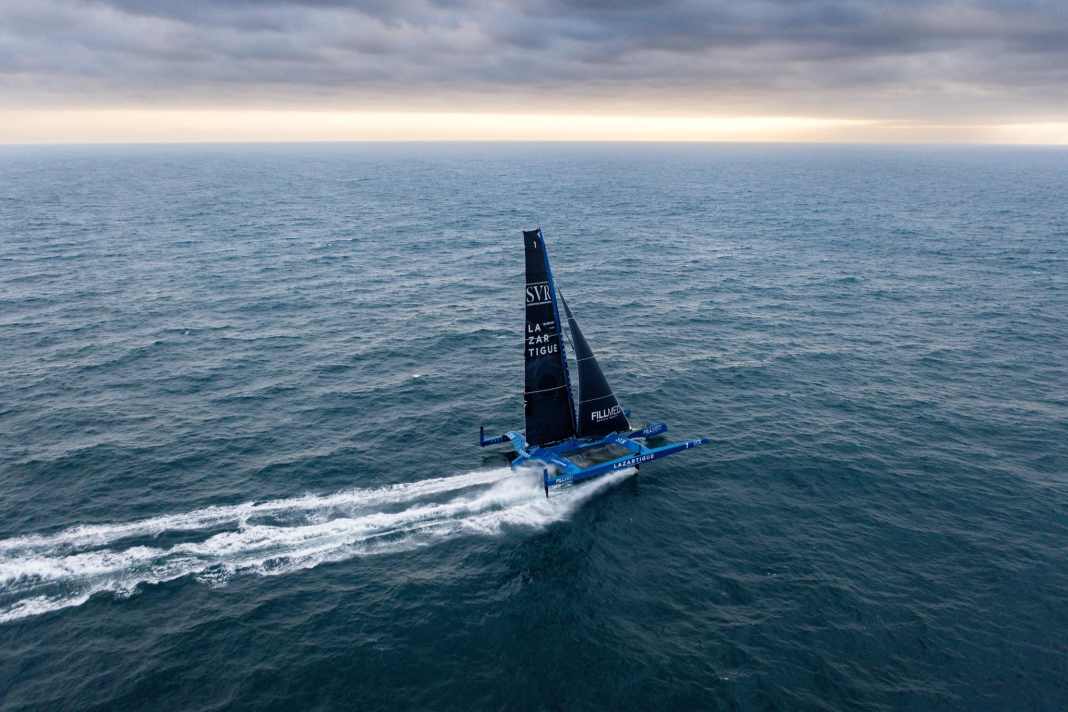





Francois Gabart and crew have to abandon their world record attempt in the Jules Verne Trophy for the time being. The starboard foil is severely damaged as a result of a collision, probably with an OANI. The new abbreviation stands for Unidentified Object or Animal and replaces the more familiar UFO (Unidentified Floating Object).
Gabart said: "The starboard foil was damaged and after analysing the damage we decided to turn back in order to reach our home port of Concarneau as quickly as possible, which we should be able to do between Friday and Sunday." The tri had been continually hitting the waves hard and braking abruptly, then the crew noticed damage to the outer laminate layers of the foil, said Gabart, the 20122/13 Vendée Globe winner. The plan now is to swap the damaged foil for a replacement at home and then start the Jules Verne Trophy again in a favourable weather window.
Jules Verne Trophy: The best time has stood since 2017
Due to the cancellation of "SVR Lazartigue", only the "Sodebo" with Thomas Coville and crew, which started a little earlier, is still in the current Jules Verne Trophy for the best time for a circumnavigation.
The record currently stands at an incredible 40 days, 23 hours, 30 minutes and 30 seconds for the route Ushant/Brest (France), round Antarctica and back. The average speed was 21.96 knots. This record time for the French trimaran under Francis Joyon has stood since 2017. The first non-stop circumnavigation dates back to 1968/69, when the Brit Robin Knox-Johnston took 313 days single-handed with his monohull "Suhaili", which corresponded to an average speed of 3.39 knots. The first crew to break the imaginary 80-day barrier, borrowed from the novel "Around the World in 80 Days" by the eponymous author Jules Verne, was the Frenchman Bruno Peyron, who circumnavigated the globe in 79 days.
